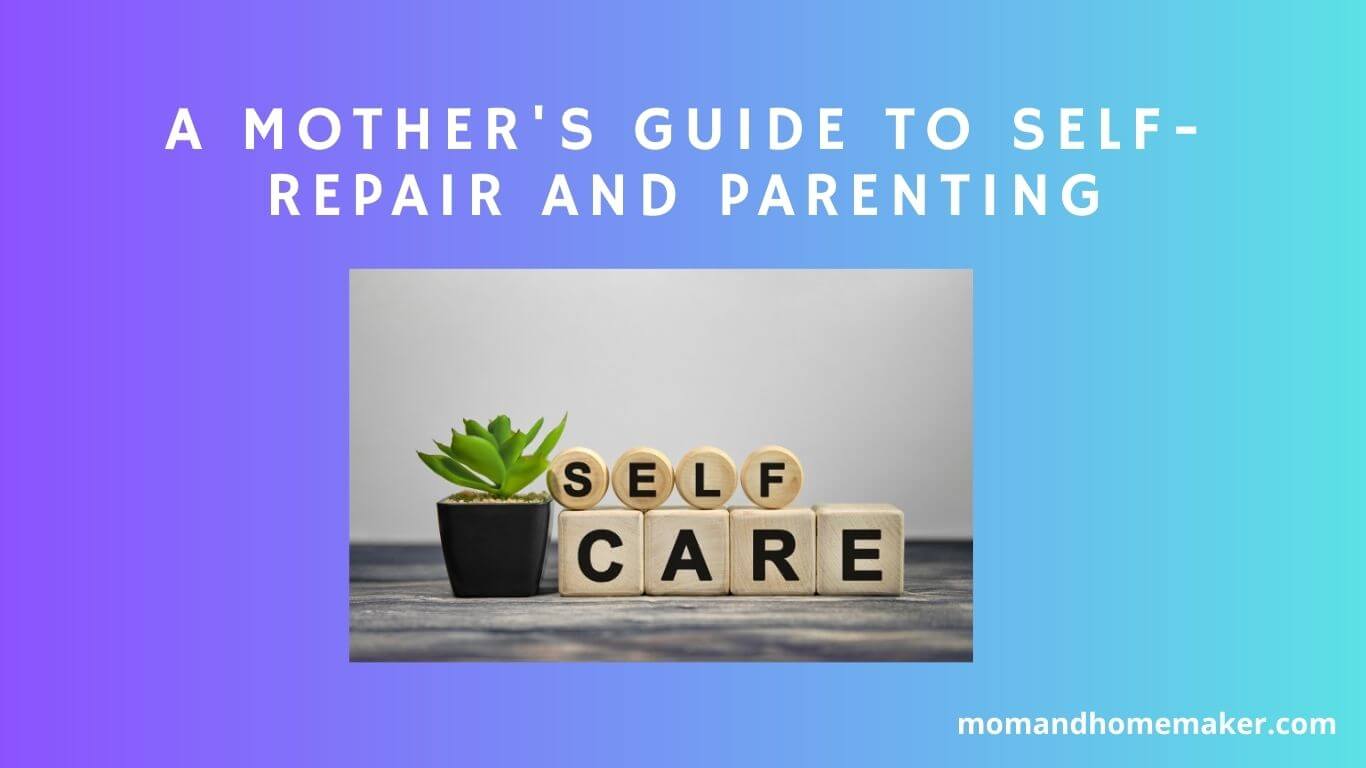Venturing into the world of being a stay-at-home mom can feel like navigating uncharted financial territory. Before making this significant decision, it’s crucial to consider your current financial situation and prepare for unexpected future expenses.
But how much money should you save to make the transition smoother? The answer might surprise you. Understanding the ins and outs of financial planning for this life-changing choice is essential, and we’re here to help you through each step of the process.
Assess Current Financial Situation
Assessing your current financial situation is the first step in planning for your transition to becoming a stay-at-home mom. Start by reviewing all your sources of income, such as your salary, investments, rental properties, or any other sources of money coming into your household.
Understanding where your income is coming from will help you determine how much you can set aside for savings as you prepare for this new phase in your life.
Next, take a close look at your current savings strategies. Evaluate your existing savings, including emergency funds, retirement accounts, and other investments you may have.
Consider if there are areas where you can reduce expenses to boost your savings rate. Setting specific savings goals can guide you in achieving the financial stability you desire as a stay-at-home mom.
Calculate Monthly Expenses
When you start figuring out your monthly expenses as a stay-at-home mom, it’s important to take a close look at your finances. First things first, create a detailed budget that covers all your expected expenses.
Sort your expenses into essentials like groceries, utilities, and rent/mortgage, and non-essentials like dining out and entertainment. This way, you can prioritize your spending and find areas where you can cut back to save more money.
Financial planning is key to making sure you can cover your monthly expenses. Consider strategies like saving a portion of your partner’s income each month or setting up automatic transfers to a savings account. This proactive approach can help you create a financial safety net for unexpected costs and emergencies.
Keeping track of your expenses is crucial when calculating your monthly budget. Make sure to record all your spending, even small purchases, to understand where your money is going. There are many apps and tools available to help you track your expenses effectively.
Consider Future Expenses
As you transition into the role of a stay-at-home mom, it’s crucial to plan for future expenses to secure your financial well-being. Start by creating an emergency fund to cover unexpected costs like medical emergencies or home repairs. Having this fund in a separate savings account will provide you with peace of mind during uncertain times.
Aside from immediate needs, consider your long-term financial goals, including retirement planning. Begin saving for retirement early to have a significant impact on your financial stability later in life.
Look into setting up a retirement account or contributing to your partner’s if they’ve one. Planning for retirement is essential for stay-at-home moms, so prioritize it in your financial strategy.
Create a Budget Plan
To create a budget plan that suits your family’s financial goals, start by outlining your monthly income and expenses. This step is crucial as you prepare to transition into the role of a stay-at-home mom. Here are some practical steps to help you establish a budget plan:
- Meal Planning and Grocery Shopping: One effective way to save money is through meal planning and strategic grocery shopping. By planning your meals for the week and sticking to a shopping list, you can’t only cut costs but also reduce food wastage.
- Entertainment and Leisure Activities: Take a close look at your current spending on entertainment and leisure activities. Consider opting for free or low-cost alternatives such as visiting local parks, participating in community events, or enjoying family game nights at home. Trimming these expenses can free up more funds to secure your family’s financial future.
- Track Your Expenses: Keeping a detailed record of all your expenses allows you to pinpoint areas where you can make cutbacks. Utilize budgeting apps or spreadsheets to accurately monitor your spending habits. Being mindful of where your money is going empowers you to make well-informed decisions and prioritize your family’s financial well-being.
Estimate Lost Income
When considering the transition to being a stay-at-home mom, it’s important to calculate the income you’ll be giving up. Conducting an opportunity cost analysis can help you understand the financial impact of leaving your job.
Evaluate your current earnings and potential future income to make informed decisions about budget adjustments and replacing lost income.
Start by determining the amount you contribute to your household finances, including your salary and any additional benefits from your job. Assess how losing this income will affect your family’s financial stability.
Explore opportunities to supplement this lost income through part-time work, freelancing, or other suitable options for a stay-at-home mom.
Review your current expenses to identify areas where you can cut back and save money to offset the loss of income. By planning ahead and taking proactive steps with your finances, you can smoothly transition into your new role as a stay-at-home mom while being prepared for the financial changes it brings.
Plan for Emergencies
Planning for emergencies is crucial as you adjust to your new role as a stay-at-home mom. One important step is to set aside funds for unexpected situations. Building an emergency fund should be a top priority.
Try to save at least three to six months’ worth of living expenses in a separate savings account. This fund acts as a safety net for unexpected events like medical emergencies, car repairs, or home maintenance issues.
Consistently contributing to your emergency fund is key. Even small monthly contributions can add up over time. Setting up automatic transfers from your checking account to your emergency fund can help you stay on track.
Adjust your savings strategy to fit your new single-income household by cutting back on non-essential expenses and redirecting those funds to your emergency fund. Being intentional about saving and preparing for unforeseen circumstances will help you handle any financial curveballs that may come your way.
Research Childcare Costs
When you research childcare costs, you gain valuable insight into the financial impact of being a stay-at-home mom. It’s important to compare the costs and benefits of options like a nanny or daycare. Here’s a simple comparison:
| Aspect | Nanny | Daycare |
|---|---|---|
| Cost | Higher hourly cost | Lower total cost |
| One-on-one attention | Individualized care | Group environment |
| Flexibility | Flexible schedule | Fixed hours |
| Social interaction | Limited socialization | More peer interaction |
Connecting with online communities of stay-at-home moms can also be helpful. These platforms offer a space to share experiences, get advice, and find emotional support.
By leveraging these resources, you can gather information on childcare costs, share money-saving tips, and build a support network as you navigate the financial aspects of staying home with your child.
Explore Ways to Cut Costs
To effectively manage your finances as a stay-at-home mom, it’s crucial to find practical ways to reduce expenses. Cutting costs can make the financial transition of becoming a stay-at-home mom smoother. Here are three tips to help you save money:
- Meal Planning: Planning your meals in advance can significantly lower your grocery bills. When you create a weekly meal plan and shopping list, you can avoid spontaneous purchases and reduce food wastage. Batch cooking and freezing meals for busy days can also be a money-saving strategy. Buying in bulk and opting for seasonal produce are additional ways to cut costs.
- Second-Hand Shopping: Embracing second-hand shopping for both yourself and your children can lead to great savings. Thrift stores, online marketplaces, and garage sales offer affordable clothing, toys, and household items. You can find quality items at a fraction of the cost of new ones. Since children outgrow clothes and toys quickly, choosing gently used items is a smart way to save money without compromising on quality.
- DIY Projects: Engaging in do-it-yourself projects is a fun and budget-friendly approach to managing expenses. Whether it’s crafting home decor or repairing clothes and small household items, DIY projects can help you save money by reducing the need to buy new items. Online tutorials and resources are readily available to guide you through various projects, allowing you to be both cost-effective and creative.
Review Health Insurance Options
When planning your family’s finances as a stay-at-home mom, it’s essential to carefully assess your health insurance choices to protect your loved ones’ well-being. Comparing different health insurance plans can help you find coverage that suits your family’s needs and fits your budget. Consider factors like premiums, deductibles, copayments, and coverage for anticipated services when exploring various plans.
Gathering recommendations from your network can be invaluable when evaluating health insurance options. Connect with other stay-at-home moms or friends in your community to learn about their experiences with different insurance providers.
They can offer valuable insights on coverage, customer service, and overall satisfaction with their insurance plans. Consult healthcare professionals or financial advisors for personalized recommendations based on your family’s unique situation.
Pay close attention to the network of healthcare providers included in each health insurance plan when comparing them. Make sure your preferred doctors, specialists, and hospitals are within the plan’s network to avoid unexpected out-of-network costs.
Understanding the limitations and restrictions of each plan will help you make an informed decision that prioritizes your family’s health and financial security.
By carefully evaluating your health insurance options through comparison shopping and seeking network referrals, you can choose a plan that offers the coverage and peace of mind your family deserves.
Set Up a Savings Goal
When planning for your family’s financial future and upcoming expenses, setting a savings goal is essential for stability and readiness. To help you through this process, here are some important steps to consider:
- Set Clear Savings Targets: Start by defining specific savings targets that align with your goal of becoming a stay-at-home mom. Break down your overall savings goal into smaller milestones that are easier to manage and track your progress effectively.
- Review and Adjust Your Budget: Take a close look at your current budget and identify areas where you can make changes to increase your savings potential. Look for ways to reduce non-essential expenses, find more affordable alternatives for regular purchases, or explore opportunities to boost your income. Making strategic budget adjustments can free up extra funds to contribute towards your savings goal.
- Regularly Monitor and Adapt: Keep a close eye on your savings progress and be prepared to adjust your goals and strategies as needed. Life circumstances and financial priorities can shift over time, so being flexible and proactive is crucial to staying on course towards achieving your savings target. By staying vigilant and adaptable, you can work towards your goal of becoming a stay-at-home mom while maintaining financial stability.
Start a Side Hustle
If you’re considering ways to boost your income as you transition into being a stay-at-home mom, starting a side hustle can be a rewarding option. One avenue to explore is taking on freelance work that matches your skills and interests.
Whether it’s graphic design, writing, social media management, or tutoring, freelancing offers flexibility and the opportunity to earn money from home.
Another option is to create and sell online courses. Share your expertise in areas like cooking, crafting, parenting, or any other skill you excel in. Online platforms such as Udemy, Teachable, or Skillshare make it easy to develop, promote, and sell your courses to a wide audience.
Starting a side hustle can be a fulfilling way to contribute financially while focusing on your family’s needs. It allows you to leverage your skills, help others learn, and earn income from the comfort of your home.
Invest for the Future
Investing for the future is a vital step in securing long-term financial stability as a stay-at-home mom. While managing your household and taking care of your family, it’s important to think about long-term investments and retirement planning to ensure a comfortable future for yourself and your loved ones.
Key Steps to Consider:
- Starting Early: It’s crucial to begin investing for the future as soon as possible. Time plays a significant role in long-term investments, allowing you to benefit from compounding returns that can substantially increase your savings over time. Consider setting up automatic contributions to your retirement accounts for consistent savings.
- Diversifying Your Portfolio: When planning for the future, diversifying your investments is essential. By spreading your money across different asset classes like stocks, bonds, and real estate, you can reduce risk. Diversification helps safeguard your savings from market fluctuations and economic uncertainties, ensuring a more stable financial future.
- Seeking Advice from a Financial Advisor: Consulting a financial advisor can provide valuable guidance in making informed decisions about your investments and retirement planning. A professional can offer personalized advice based on your financial goals, risk tolerance, and time horizon. They can assist you in creating a tailored investment strategy aligned with your long-term objectives.
Seek Financial Advice
As a stay-at-home mom, it’s crucial to make informed financial decisions that suit your unique situation. Seeking guidance from a financial advisor is essential for personalized advice on various aspects of your financial planning, such as retirement savings and college funds for your children.
A financial advisor can help you understand different investment options, create a practical savings plan, and adjust it as needed based on your family’s financial status.
When it comes to planning for your children’s education, discussing college funds with a financial advisor can assist you in setting specific savings goals, exploring education savings accounts like 529 plans, and devising a strategy to cover their educational expenses.
By consulting a professional, you can gain valuable insights on how to optimize your savings, maximize investment returns, and safeguard your family’s financial future.
Plan for Returning to Work
Planning your return to work after being a stay-at-home mom requires thoughtful consideration of your skills, interests, and the balance you want between work and home life. As you get ready to reenter the workforce, here are some important steps to help you navigate this process effectively:
- Strategies for Returning to Work: Explore different approaches to make your transition back to work smoother. Consider options like part-time positions, freelancing, or remote work to find a setup that suits your current lifestyle and mom duties. Look for companies that offer flexible work options to support your work-life harmony.
- Skill Enhancement: Take this opportunity to improve your skills and stay up-to-date in your field. Consider taking online courses, attending workshops, or getting certifications to upgrade your knowledge and expertise. By investing in your professional growth, you can increase your confidence and marketability when reentering the job market.
- Building Professional Connections: Reconnect with former colleagues, attend industry gatherings, and engage in networking activities to expand your professional network. Creating a robust network can provide you with valuable job opportunities, mentorship, and insights into the current job landscape. Utilize platforms like LinkedIn to showcase your skills and stay in touch with industry professionals.
Monitor and Adjust Financial Plan
Regularly reviewing and adjusting your financial plan as a stay-at-home mom is crucial to ensure your family’s financial well-being stays on track. By monitoring and adapting your plan, you can better prepare for unexpected expenses and achieve your financial goals effectively.
Here are some key savings strategies and financial milestones to consider:
| Financial Milestones | Savings Strategies |
|---|---|
| Emergency Fund | Save a portion of your partner’s income to build an emergency fund covering 3-6 months of expenses. |
| Retirement Savings | Contribute to retirement accounts like IRAs or 401(k)s to secure your future and enjoy tax benefits. |
| Children’s Education | Start a 529 college savings plan or other education accounts to prepare for your kids’ future expenses. |
| Insurance Coverage | Regularly review your insurance policies to ensure adequate coverage for health, life, disability, and home insurance. |
Conclusion
When you start your journey to becoming a stay-at-home mom, remember that managing your finances is like tending to a garden. Just as you care for your plants with attention, you must also handle your money with care and foresight.
By practicing smart saving and investing, you can build a secure future for you and your family. So, nurture your financial garden with care and watch it thrive.











